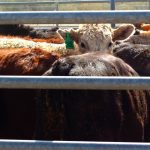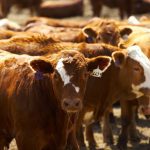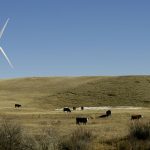Reading Time: < 1 minute The main weather maker will be a trough of low pressure forecasted to develop over the northwestern U.S. today, which will then track eastwards over the next several days.

Prairie forecast: Spring trying to regain control
Forecast issued March 27, covering March 27 to April 3, 2024

Klassen: Feeder market rally stalls
Reading Time: 2 minutes Compared to last week, Western Canadian feeder cattle prices were quoted $3-$4/cwt on either side of unchanged.

Spring wheat bids edge higher in Western Canada
Reading Time: 2 minutes Spring wheat bids in Western Canada moved higher during the week ended March 21, as wheat futures in the United States continued to recover off their nearby lows.

Alberta barley breeding centre relaunched
Reading Time: < 1 minute "Western Crop Innovations will carry on the Field Crop Development Centre’s substantial legacy, ensuring its work is addressing the issues farmers are facing in the fields," said RJ Sigurdson, Alberta's minister of agriculture and irrigation in a news release Wednesday.

Prairie forecast: Is winter making one last push?
Issued March 20, covering March 20-27, 2024
Reading Time: 2 minutes A sprawling Arctic high pressure system is poised to dominate the region, ushering in colder-than-normal temperatures reminiscent of January's grip, but not as cold. While cold snaps this time of year often bring snow, the prevailing high pressure suggests storm activity will largely skirt the area, save for southern and southwestern Alberta where significant snowfall is anticipated.

Klassen: Feeder market adjusts to lower supplies
Reading Time: 2 minutes Western Canadian prices for backgrounded replacements were $2 to $4 higher than last week. Lower flesh yearlings were valued $3 to $8 above week-ago levels. Prices for calves under 800 pounds were up $3 to $7 compared to seven days earlier with noted strength in feeders under 600 pounds.

Farmers, oil drillers in parched Alberta brace for water shortage
Drought could cause double-digit declines in Alberta's wheat yields, data suggests
Reading Time: 3 minutes Drought in Alberta is stretching into its fourth year and farmers and oil companies are planning for water restrictions that threaten production of wheat, beef and crude.

Prairie forecast: Very warm west, mild but a little unsettled east
Issued March 13, covering March 13 to 20
Reading Time: 3 minutes The cold weather has also been replaced by above average temperatures. The question I have been hearing the most is--has spring arrived or is there still a bit of winter left to be felt?

Klassen: Yearling price trend stalls while calves ratchet higher
Larger players aggressively securing lightweight calves on expectations of low yearling supplies
Reading Time: 2 minutes Western Canadian feedlots are carrying sufficient numbers for the time being and feeding margins remain deep in red ink on unhedged cattle. Secondly, carcass weights are sharply above year-ago levels and Alberta finishing lots are backed up with market-ready supplies.

Alberta renewable ban could hurt $11 bln in investments, says study
Farmland-protecting approach puts province at loggerheads with federal Liberals' green energy plans
Reading Time: 2 minutes Canadian province Alberta's ban on some renewable projects could hurt $11.1 billion in investments and stall up to 6.3 gigawatts (GW) of solar and wind power capacity, a study said on Monday.


